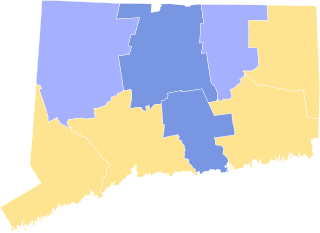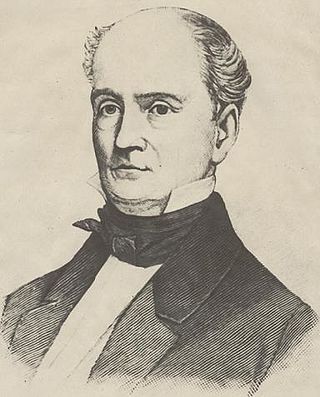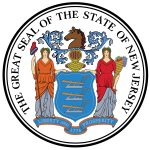
The 1847 New Jersey gubernatorial election was held on November 2, 1847. Democratic nominee Daniel Haines defeated Whig nominee William Wright with 51.88% of the vote.

The 1850 Connecticut gubernatorial election was held on April 1, 1850. Former congressman and Democratic Party nominee Thomas H. Seymour defeated former state legislator and Whig nominee Lafayette S. Foster with 48.11% of the vote.

The 1855 Massachusetts gubernatorial election was held on November 6. Know-Nothing candidate Henry J. Gardner was re-elected to a second term as Governor in a multi-partisan race, defeating Republican Julius Rockwell and Democrat Erasmus Beach.

The 1856 Massachusetts gubernatorial election on November 4. Incumbent Know-Nothing governor Henry J. Gardner was re-elected to a third term. He benefited greatly from a deal with the state's new Republican Party, which agreed not to field a candidate in exchange for Gardner's support of presidential nominee John C. Frémont. With no serious challenger in the field against him, Gardner easily defeated Democrat Erasmus Beach and George W. Gordon, an American Party member running in support of the national ticket.

The 1853–54 Massachusetts gubernatorial election consisted of an initial popular held on November 14, 1853, which was followed by a legislative vote that was conducted on January 9, 1854, which elected Whig Party nominee Emory Washburn. The ultimate task of electing the governor had been placed before the Massachusetts General Court because no candidate received the majority of the vote required for a candidate to be elected through the popular election.

The 1850–51 Massachusetts gubernatorial election consisted of an initial popular held on November 11, 1850 that was followed by a legislative vote that was conducted on January 11, 1851. It saw the election of Democratic Party nominee George S. Boutwell. The ultimate task of electing the governor had been placed before the Massachusetts General Court because no candidate received the majority of the vote required for a candidate to be elected through the popular election.

The 1840 Delaware gubernatorial election was held on November 3, 1840. Whig Governor Cornelius Comegys was unable to seek re-election to a second term. Former State Representative William B. Cooper ran as the Whig nominee to succeed Comegys and faced Democratic nominee Warren B. Jefferson in the general election. Cooper won the largest victory in a gubernatorial election since 1819, and was ushered into office with a sizable Whig majority in the legislature.

The 1844 Delaware gubernatorial election was held on November 5, 1844. Whig Governor William B. Cooper was unable to seek re-election to a second term. Thomas Stockton, the former New Castle County Register in Chancery, ran as the Whig nominee to succeed Cooper. He faced former State Senator William Tharp, the Democratic nominee. Despite the state's strong financial condition, Whigs came close to losing their grip on power; Stockton only defeated Tharp by 45 votes, or 0.37%. However, Stockton died a year into his term, on March 2, 1846, elevating the Speaker of the State Senate, Joseph Maull, to the governorship, and triggering a special election in 1846. Maull, served just two months before he, too died, elevating State House Speaker William Temple to the governorship.

The 1846 Delaware gubernatorial special election was held on November 3, 1846. A year into the term of Whig Governor Thomas Stockton, elected in 1844, he died, elevating State Senate Speaker Joseph Maull to the governorship. Maull, in turn, also died, making State House Speaker William Temple Governor. Former State Representative Peter F. Causey ran as the Whig nominee to succeed Temple, and faced former State Senator William Tharp, the Democratic nominee from 1844. Tharp narrowly defeated Causey, returning the Governorship to the Democratic Party.

The 1842 Massachusetts gubernatorial election consisted of an initial popular election held on November 14, 1842 that was followed by a legislative vote held on January 17, 1843. The ultimate task of electing the governor had been placed before the Massachusetts General Court because no candidate received the majority of the vote that was constitutionally required for a candidate to be elected through the popular election. Incumbent Whig Governor John Davis was defeated by Democratic nominee and former Governor Marcus Morton.

The 1843–44 Massachusetts gubernatorial election consisted of an initial popular election held on November 13, 1843, that was followed by a legislative vote held on January 8, 1844. The ultimate task of electing the governor had been placed before the Massachusetts General Court because no candidate received the majority of the vote that was constitutionally required for a candidate to be elected through the popular election. Incumbent Democratic Governor Marcus Morton was defeated by Whig Party nominee George N. Briggs.

The 1838 Rhode Island gubernatorial election was held on April 18, 1838.

The 1849 Rhode Island gubernatorial election was held on April 4, 1849.

The 1839 Rhode Island gubernatorial election was held on April 17, 1839.

The 1844 Ohio gubernatorial election was held on October 8, 1844.

The 1843 Vermont gubernatorial election was held on September 5, 1843.

The 1844 Vermont gubernatorial election was held on September 3, 1844.

The 1845 Vermont gubernatorial election was held on September 2, 1845.

The 1848–49 Massachusetts gubernatorial election consisted of an initial popular election held on November 13, 1848 that was followed by a legislative vote held on January 8, 1949. Incumbent Whig Governor George N. Briggs was reelected.

The 1845–46 Massachusetts gubernatorial election consisted of an initial popular election held on November 10, 1845 that was followed by a legislative vote held on January 12, 1846. The ultimate task of electing the governor had been placed before the Massachusetts General Court because no candidate received the majority of the vote required for a candidate to be elected through the popular election. Incumbent Whig Governor George N. Briggs defeated Democratic nominee Isaac Davis, Liberty Party nominee Samuel E. Sewall and Know Nothing nominee Henry Shaw.





















